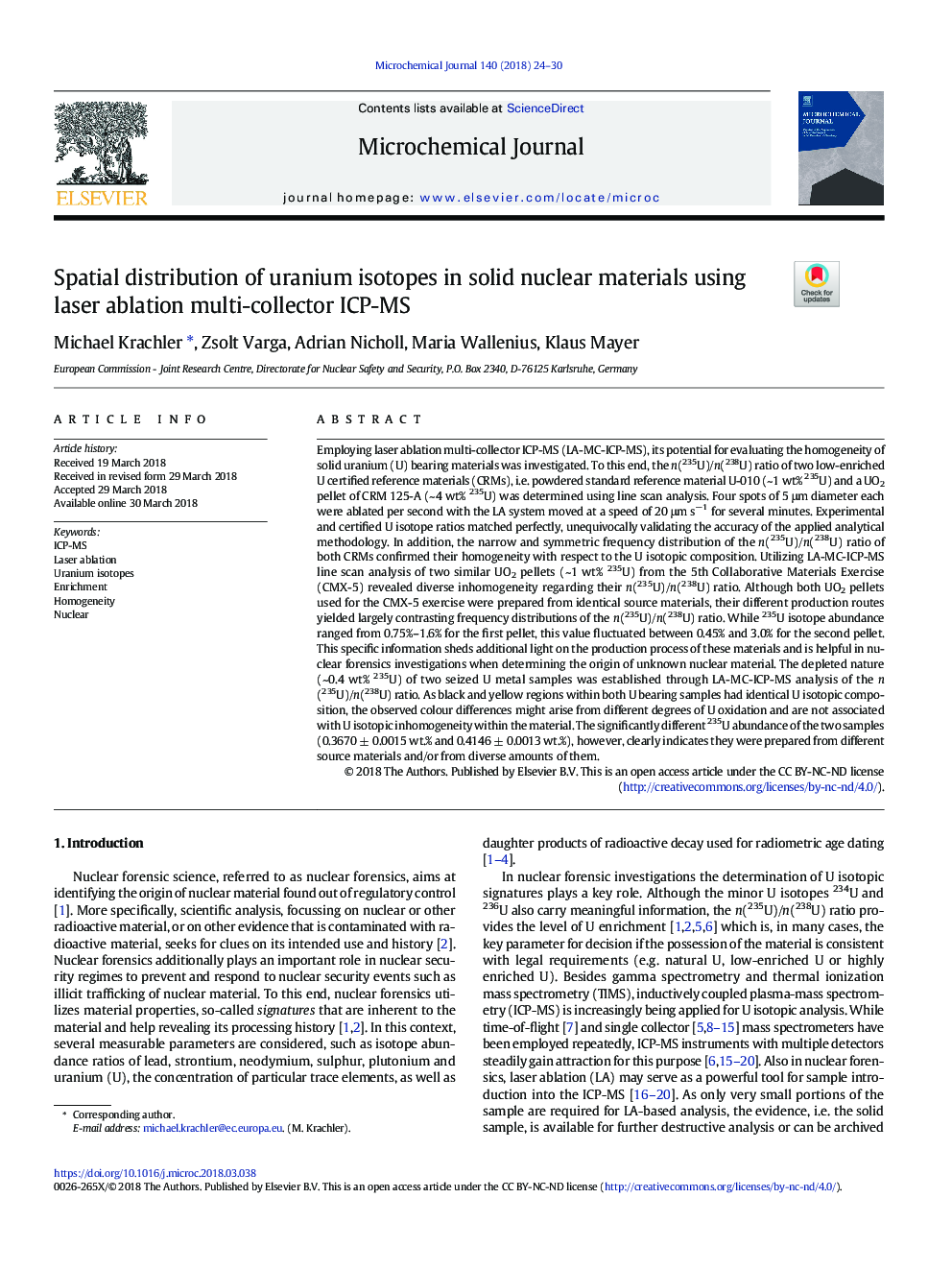| Article ID | Journal | Published Year | Pages | File Type |
|---|---|---|---|---|
| 7640269 | Microchemical Journal | 2018 | 7 Pages |
Abstract
Employing laser ablation multi-collector ICP-MS (LA-MC-ICP-MS), its potential for evaluating the homogeneity of solid uranium (U) bearing materials was investigated. To this end, the n(235U)/n(238U) ratio of two low-enriched U certified reference materials (CRMs), i.e. powdered standard reference material U-010 (~1 wt% 235U) and a UO2 pellet of CRM 125-A (~4 wt% 235U) was determined using line scan analysis. Four spots of 5 μm diameter each were ablated per second with the LA system moved at a speed of 20 μm sâ1 for several minutes. Experimental and certified U isotope ratios matched perfectly, unequivocally validating the accuracy of the applied analytical methodology. In addition, the narrow and symmetric frequency distribution of the n(235U)/n(238U) ratio of both CRMs confirmed their homogeneity with respect to the U isotopic composition. Utilizing LA-MC-ICP-MS line scan analysis of two similar UO2 pellets (~1 wt% 235U) from the 5th Collaborative Materials Exercise (CMX-5) revealed diverse inhomogeneity regarding their n(235U)/n(238U) ratio. Although both UO2 pellets used for the CMX-5 exercise were prepared from identical source materials, their different production routes yielded largely contrasting frequency distributions of the n(235U)/n(238U) ratio. While 235U isotope abundance ranged from 0.75%-1.6% for the first pellet, this value fluctuated between 0.45% and 3.0% for the second pellet. This specific information sheds additional light on the production process of these materials and is helpful in nuclear forensics investigations when determining the origin of unknown nuclear material. The depleted nature (~0.4 wt% 235U) of two seized U metal samples was established through LA-MC-ICP-MS analysis of the n(235U)/n(238U) ratio. As black and yellow regions within both U bearing samples had identical U isotopic composition, the observed colour differences might arise from different degrees of U oxidation and are not associated with U isotopic inhomogeneity within the material. The significantly different 235U abundance of the two samples (0.3670 ± 0.0015 wt.% and 0.4146 ± 0.0013 wt.%), however, clearly indicates they were prepared from different source materials and/or from diverse amounts of them.
Related Topics
Physical Sciences and Engineering
Chemistry
Analytical Chemistry
Authors
Michael Krachler, Zsolt Varga, Adrian Nicholl, Maria Wallenius, Klaus Mayer,
